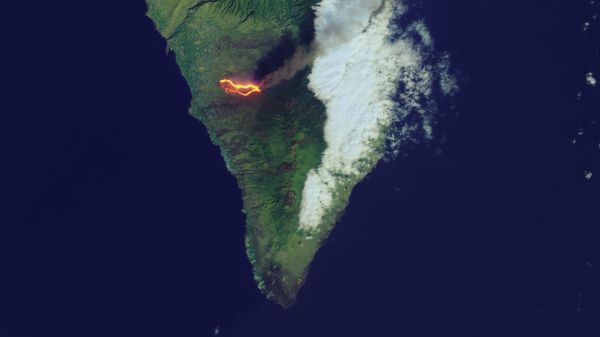When you purchase through link on our site , we may realize an affiliate mission . Here ’s how it works .
A volcano outside Rome , long thought extinct , is rumbling to life . But do n’t panic : The vent is n’t potential to blow its top for at least another 1,000 years .
Colli Albani isa volcanic complexof hills situate 19 miles ( 30 kilometers ) from the center of Rome . There are no historical records of eruptions from Colli Albani , so it was long thought to be extinct , according to the American Geophysical Union(AGU ) . Now , researchers have reported in the journal Geophysical Research Letters that Colli Albani just does n’t combust that often . In fact , it enters an eruptive phase every 31,000 long time or so .

Colli Albani, a volcanic complex outside Rome, was thought to be extinct, that is, until it showed signs of activity.
A team of researchers , led by volcanologist Fabrizio Marra of the National Institute of Geophysics and Volcanology in Rome , used ground - based observations of rising land , earthquake swarms and steam vents alongside satellite data to trail Colli Albani ’s late bodily process . An psychoanalysis of rocks from the volcano reveal a history of preceding volcanic eruption , the most recent of which pass off 36,000 years ago . [ The 11 Biggest Volcanic Eruptions in story ]
Now , the soil underneath the volcano is inflate , rising at a maximum of about 0.08 column inch ( 2 millimetre ) per yr in areas where steam vents are emerging , Marra and his co-worker reported . During the past 200,000 year , the area has risen by about 164 feet ( 50 measure ) in meridian , they found . This suggest that magma is entering fractures beneath the volcano , they said .
The rationality for the change has to do with the subsurface geology of Colli Albani , Marra told the AGU . Until about 2,000 years ago , the surrounding land held together a fracture under the volcano , preventing magma from bubbling to the surface . More late , however , the subsurface stresses have changed so that the rock on one side of the fracture is displace and sliding against the rock on the other side , according to the AGU .

So far , these changes have manifested in a cloud ofearthquakes around Romethat lasted from 1991 to 1995 . Another sign was a pocket-size fumarole , or steam vent , that seem in a route near Rome ’s Fiumicino drome in 2013 .
throw its 31,000 - yr cycle , Colli Albani is arguably overdue for an bang , but the volcano wo n’t unexpectedly spoil its top , Marra tell the AGU . It in all likelihood wo n’t build up enough insistence for an explosive eruption for at least 1,000 years . Even then , Romans can wait plenty of warning , Marra said , as an volatile eruption would be preceded by initial stages of restrained volcanic action .
Original article onLive Science .

















